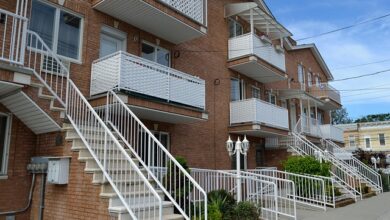The Pros and Cons of Bundling Home and Auto Insurance in Canada

In Canada, many insurance providers offer the option to bundle home and auto insurance policies into a single package. This approach has become increasingly popular among homeowners and drivers looking to simplify their insurance arrangements and potentially save money. However, like any financial decision, bundling home and auto insurance comes with its own set of advantages and disadvantages. In this article, we’ll explore the pros and cons of bundling these policies to help you determine whether it’s the right choice for your needs.
What is Bundling Insurance?
Bundling insurance refers to the practice of combining multiple insurance policies—such as home and auto insurance—under one provider. Instead of purchasing separate policies from different companies, you consolidate your coverage with a single insurer. This can streamline your billing process, reduce administrative tasks, and often result in cost savings.
Now, let’s break down the key benefits and potential drawbacks of bundling home and auto insurance in Canada.
The Pros of Bundling Home and Auto Insurance
- Cost Savings Through Discounts One of the most significant advantages of bundling is the potential for substantial savings. Many insurers offer multi-policy discounts to customers who purchase both home and auto insurance from them. These discounts can range from 5% to 25%, depending on the provider and the level of coverage. Over time, these savings can add up significantly, making bundling an attractive option for budget-conscious consumers.
- Simplified Billing and Management Managing multiple insurance policies from different providers can be cumbersome. With bundling, you receive a single bill and deal with one customer service team for all your insurance needs. This simplifies record-keeping, reduces paperwork, and makes it easier to track payments and renewals.
- Streamlined Claims Process If you experience a loss that affects both your home and vehicle (e.g., a fire or natural disaster), having bundled policies means you only need to file one claim with a single insurer. This can make the claims process faster and less stressful compared to dealing with multiple companies.
- Loyalty Rewards Some insurers reward long-term customers with additional perks, such as loyalty discounts or enhanced coverage options. By bundling your policies, you demonstrate commitment to a single provider, which may qualify you for these benefits over time.
- Customizable Coverage Bundled policies often allow for greater flexibility in tailoring your coverage. For example, you might be able to adjust your deductible levels or add endorsements (e.g., water damage protection for your home or roadside assistance for your car) without jumping through hoops with multiple insurers.
- Potential for Better Customer Service When you consolidate your business with one provider, you may receive more personalized attention. Insurers value bundled customers because they represent higher revenue, so they may prioritize your needs and provide superior service.
The Cons of Bundling Home and Auto Insurance
- Limited Shopping Around While bundling can save you money, it may also discourage you from shopping around for better rates. Sticking with one provider for convenience could mean missing out on competitive offers from other companies. It’s important to periodically compare quotes to ensure you’re still getting the best deal.
- Higher Overall Costs if Not Carefully Managed Although bundling often leads to discounts, it doesn’t guarantee the lowest price. Some insurers may charge higher premiums for individual policies when bundled, offsetting the discount. Without careful comparison, you might end up paying more than necessary.
- Less Flexibility in Choosing Providers By bundling, you’re committing to a single insurer for both your home and auto coverage. If you later find that the provider excels in one area but falls short in another (e.g., excellent auto coverage but subpar home insurance), switching becomes more complicated.
- Risk of Overpaying for Unnecessary Coverage Bundled policies sometimes include features or coverage levels you don’t actually need. For instance, you might inadvertently pay for extras like identity theft protection or extended warranties that aren’t relevant to your situation. Always review your policy details carefully to avoid unnecessary expenses.
- Claims Impact on Both Policies Filing a claim under a bundled policy could affect both your home and auto insurance rates. For example, if you have an at-fault car accident, your home insurance premium might increase as well since the insurer views you as a higher-risk client overall. This interconnectedness can lead to unexpected costs.
- Not All Providers Offer Competitive Bundles Not every insurer provides equally attractive bundling options. Some may have limited discounts or rigid terms that don’t align with your needs. It’s crucial to research and compare providers to ensure you’re working with a reputable company that offers fair pricing and comprehensive coverage.
Who Should Consider Bundling Home and Auto Insurance?
Bundling isn’t suitable for everyone, but it can be a smart choice for certain individuals:
- Homeowners with Vehicles: If you own both a home and a car, bundling allows you to centralize your coverage.
- Busy Professionals: Those with hectic schedules may appreciate the simplicity of managing one account instead of juggling multiple policies.
- First-Time Homebuyers: New homeowners seeking straightforward solutions may benefit from the ease of bundling.
- Families with Multiple Cars: Households with several vehicles can maximize savings by bundling all their auto policies with their home insurance.
If you fit into one of these categories, bundling could be a practical and cost-effective solution.
Tips for Maximizing the Benefits of Bundling
To ensure you get the most value from bundling your home and auto insurance, consider the following tips:
- Compare Quotes Regularly: Don’t assume your current provider offers the best rates. Periodically shop around to confirm you’re getting a competitive deal.
- Negotiate Discounts: Ask your insurer about additional discounts beyond the standard multi-policy rate. Loyalty programs, safety features, and payment plans can further reduce costs.
- Review Coverage Annually: Reassess your needs each year to ensure your bundled policy still meets your requirements. Adjust coverage levels as necessary to avoid overpaying.
- Check for Hidden Fees: Read the fine print to identify any extra charges that might negate the savings from bundling.
- Work with a Broker: An independent insurance broker can help you compare bundled offers from multiple providers and find the best combination of price and coverage.




